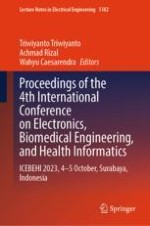2024 | OriginalPaper | Chapter
Voice Features Examination for Parkinson’s Disease Detection Utilizing Machine Learning Methods
Authors : Farika Tono Putri, Muhlasah Novitasari Mara, Rifky Ismail, Mochammad Ariyanto, Hartanto Prawibowo, Triwiyanto, Sari Luthfiyah, Wahyu Caesarendra
Published in: Proceedings of the 4th International Conference on Electronics, Biomedical Engineering, and Health Informatics
Publisher: Springer Nature Singapore
Activate our intelligent search to find suitable subject content or patents.
Select sections of text to find matching patents with Artificial Intelligence. powered by
Select sections of text to find additional relevant content using AI-assisted search. powered by
